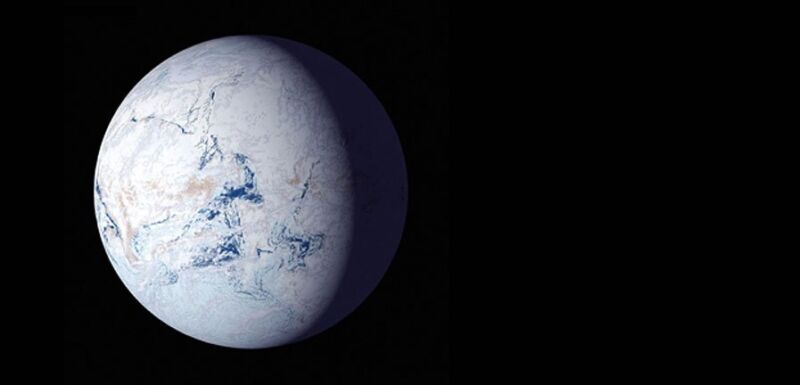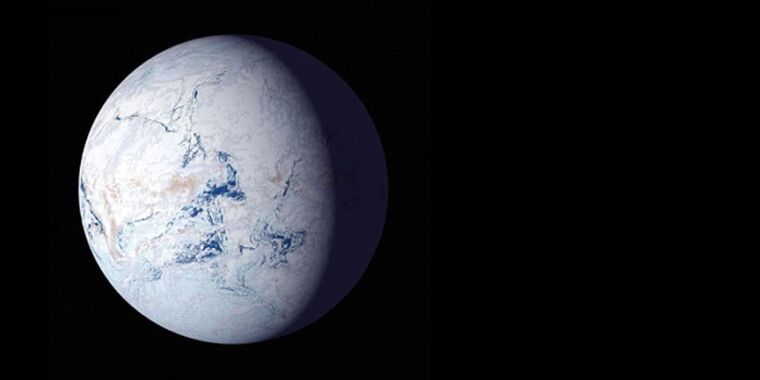
The Earth has gone through many geological phases, but there was one notable period of stagnation: our planet was a tropical environment where algae and single-celled organisms thrived for almost 2 billion years. Then things changed dramatically when the planet went into a deep freeze.
It was previously unclear when Earth became a giant freezer. Now, researchers from University College London have found evidence in a rock formation in Scotland known as the Port Askaig Formation that shows evidence of the transition from a tropical Earth to a frozen Earth 717 million years ago. This marks the beginning of the Sturtian glaciation and is thought to be the first of two “snowball Earth” events that left much of the planet’s surface covered in ice. Multicellular life is thought to have emerged after Earth thawed.
This outcrop in the Port Askaig Formation, found on the Scottish islands known as the Garvellachs, is unique because it provides the first conclusive evidence of when a tropical Earth froze over – underlying layers that provide a timeline from a warmer era to an icy era. Other rocks formed around the same time in other parts of the world lack this transitional evidence because ancient glaciers most likely scraped it away.
“The Port Askaig preserves a relatively complete record of the global 'Sturtian glaciation,'” the researchers said in a study recently published in the Journal of the Geological Society.
In my snowball era
Beneath the rocks formed during the Sturtian glaciation is a deep layer of carbonate rocks known as the Garb Eileach Formation. These have been dated to the warm, tropical Tonian period, which began 1 billion years ago and lasted until 717 million years ago, when cold took over. The youngest rocks in this formation are evidence of the transition to the first “snowball Earth.”
Why did the Earth experience such a cold snap in the first place? A sudden drop in solar radiation likely led to an exceptionally long winter, which caused a (if you’ll pardon the pun) snowball effect. With less radiation, more ice forms, and more ice makes the planet more reflective, which means it sends more sunlight back out into space and keeps the planet cooling, allowing even more ice to form.
To find out when this global cold snap began, the research team collected 11 sandstone samples from the Garvellach Islands and analyzed zircons in the sandstone. Zircons are especially useful in dating rock formations because they are often as old as the rock they are in, making some of them the oldest minerals on Earth. They are also resistant to chemical breakdown. What is especially important about zircons is that they contain uranium, which decays into lead over time. The amount of uranium that has been changed to lead can tell us how much time has passed since the zircon formed.
Just a phase
Using both laser ablation (a type of laser imaging that shows how elements and isotopes are distributed in a sample) and plasma mass spectrometry, the researchers measured the uranium-to-lead ratio. The time it took for the uranium to become lead matched their estimates, which were based on previous studies that had estimated, but not confirmed, the onset time of the Sturtian glaciation.
Another thing the outcrop's zircons told the researchers is that the Sturtian glaciation lasted about 58 million years. It was closely followed by the Marinoan glaciation, which is thought to have lasted another 16 million years, and both phases of the “Snowball Earth” make up what's known as the Cryogenian period. The rocks containing these zircons were likely deposited by a moving glacier as the supercontinent Rodinia (which preceded the better-known Pangaea) broke apart.
The Port Askaig Formation is now, as the scientists say in the same study, “one of the thickest (up to 1.1 km) and most complete records of Cryogenian glaciation.”
Because glaciers have not scraped away this formation, a record is also preserved of when the Earth began to warm again. The zircon crystals that formed during the Sturtian glaciation gradually disappear into younger rocks until they are replaced by zircons that formed after the ice began to melt. So there is not only evidence of the beginning of the deep freeze, but also evidence of the thaw that began about 635 million years ago.
As the ice melted, complex multicellular life began to appear during the Ediacaran period. There may have been several reasons for this. Hypotheses suggest that sea temperatures rose, an influx of sunlight triggered photosynthesis, and there was greater availability of nutrients than before.
The scientists involved in the Port Askaig study believe that any life that survived the Cryogenian period faced an immense challenge as the ice began to melt. These organisms had been used to constant cold for millions of years, and now they were faced with a battle to adapt as quickly as possible or die.
And what about those that survived? They became the ancestors of all animals that have ever existed, including us.
Journal of the Geological Society, 2024. DOI: 10.1144/jgs2024-02

